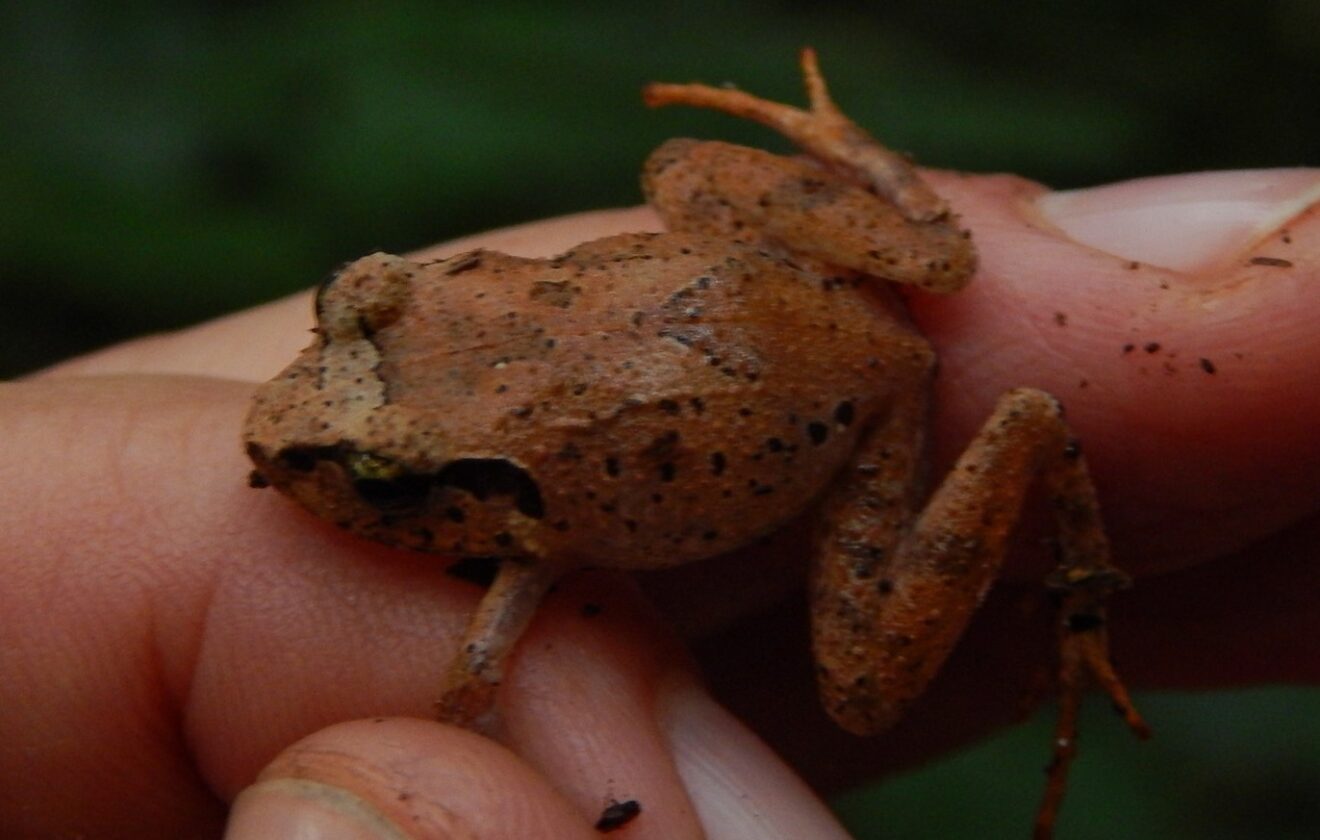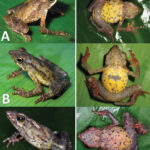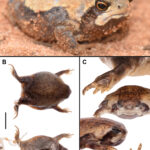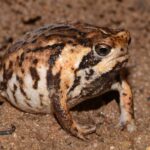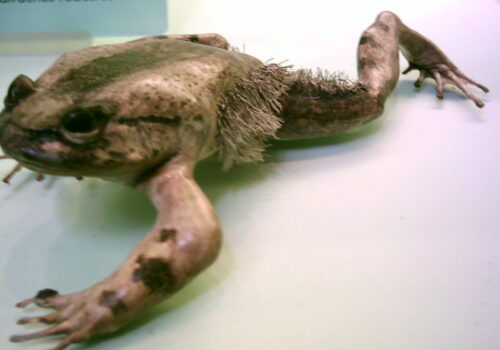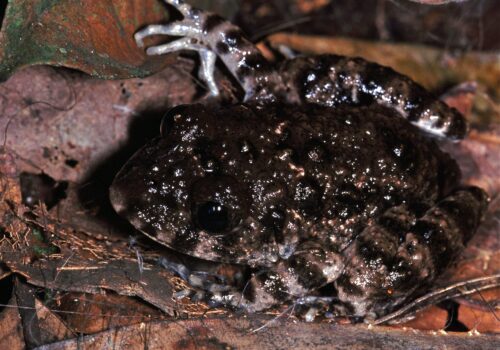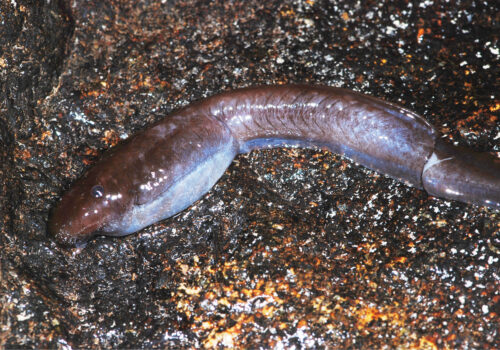- Arthroleptis affinis: Secrets of the Forest Floor's Elusive Amphibian
- Introduction: Small Frog, Big Mysteries
- Taxonomy and Classification
- Natural Habitat: Concealed within the Tropical Understory
- Physical Characteristics: Master of Camouflage in Miniature Form
- Behavior and Life Cycle: Remarkable Adaptations in the Forest Twilight
- Ecological Role: Guardians of the Forest Floor
- Threats and Conservation Status: A Species on the Edge
- Cultural and Scientific Significance: Small Frogs with Big Meaning
- Conclusion: Cherishing Amphibious Wonders
Arthroleptis affinis: Secrets of the Forest Floor’s Elusive Amphibian#
Introduction: Small Frog, Big Mysteries#
Among the lush, tangled foliage and evocative sounds of Sub-Saharan Africa’s tropical rainforests, a tiny frog species moves almost unnoticed, living a cryptic existence amid fallen leaves and undergrowth. The Arthroleptis affinis, or the Affinis squeaker frog, draws fascination not by its flamboyant colors or boastful calls, but through its subtle adaptations and intricate relationship with its forest home.
Classified under the genus Arthroleptis, these small amphibians possess a secretive lifestyle that belies their ecological significance. While they might seem humble in their camouflage and gentle chirps, their story is rich in ecological lessons and cautions for conservation. Consider this: the Arthroleptis affinis does not undergo an aquatic, tadpole stage, but rather emerges as miniature adults straight from the egg—a splendid evolutionary adaptation that makes them one of nature’s captivating marvels.
Taxonomy and Classification#
Arthroleptis affinis, commonly known as the Affinis squeaker or allied squeaker, belongs to the family Arthroleptidae, a group of small terrestrial frogs primarily native to Sub-Saharan Africa. Within their familial taxonomy, the genus Arthroleptis is recognized for those frogs that forego a free-swimming tadpole phase, a trait scientists term “direct development.”
First described scientifically by Albert Günther in 1908, A. affinis has historically been grouped closely with species like Arthroleptis stenodactylus and Arthroleptis xenodactyloides. However, subtle distinctions—such as vocalizations and skin textures—firmly place A. affinis in its own distinct niche, poorly explored until recently, highlighting the complexities still hidden in Africa’s biodiversity.
Natural Habitat: Concealed within the Tropical Understory#
The affinity squeaker frog inhabits the equatorial tropical and subtropical forest floors of Central and East Africa, primarily in countries including Cameroon, Central African Republic, the Democratic Republic of Congo, Uganda, Rwanda, Burundi, and Tanzania. Deep within cool, moist understories shaded by gigantic trees and interwoven vines, the species thrives beneath a layer of leaf litter, moss, and rotting timber—conditions perfectly suited for its discreet lifestyle.
These forests offer shade, moisture, and abundant prey, including small arthropods and invertebrates. Rich leaf litter creates the ideal microhabitat, maintaining humidity and temperature stability, which are vital conditions for their unique egg development process. Indeed, the habitat chosen by A. affinis underlies the fragility and interdependence of tropical ecosystems; disturbance or fragmentation quickly threatens the delicate balance these frogs require.
Physical Characteristics: Master of Camouflage in Miniature Form#
At first glance, Arthroleptis affinis appears modest and unremarkable, measuring roughly 20 to 30 millimeters from nose tip to vent. Yet, upon closer inspection, the beauty and elegance of their adaptation reveal themselves. Their coloration ranges from mottled shades of brown and olive to subtle reds or greyish-green, providing nearly perfect camouflage among fallen leaves, twigs, and soil.
Textural skin further enhances their invisibility; it often exhibits granular patterns, delicate bumps, warts, or folds, perfectly mimicking their surroundings. Their limbs are slender yet muscular enough to propel rapid leaps when startled, disappearing seamlessly into the leafy backdrop. Large, rounded eyes help them track tiny prey movements with precision, while broad mouths allow the frog to quickly capture small insects and invertebrates that pass unknowingly nearby. Each physical trait has evolved not simply for beauty, but for survival and efficiency amid constant ecological tension.
Behavior and Life Cycle: Remarkable Adaptations in the Forest Twilight#
Vocalizations and Courtship#
The rainforest at dawn and twilight is often punctuated by subtle, squeaky notes—a signature of male Arthroleptis affinis calling to attract females. Their vocalizations are high-pitched and rhythmic, often described as gentle “squeaky chirps” or “ticking sounds,” though far softer than the loud croaks of larger frog species. Females detect these calls through dense underbrush, navigating their way toward prospective mates hiding among moist nooks of forest debris.
Direct Development: Bypassing the Tadpole Phase#
Unlike most amphibians, which lay eggs in temporary pools of water and rely on a tadpole phase, Arthroleptis affinis exhibits direct development—a fascinating evolutionary adaptation. Eggs are laid in hidden terrestrial pockets or damp leaf-litter crevices. Protected beneath moss or decaying wood, embryos develop entirely within these safe pockets until miniature froglets fully form and emerge as independent juveniles.
This adaptation allows A. affinis to survive in habitats without substantial standing water, expanding their range into humid but stationary microhabitats. By foregoing the vulnerable aquatic larval stage, Arthroleptis affinis reduces predation risks and dependence on unpredictable rains, highlighting nature’s creative evolutionary strategies.
Ecological Role: Guardians of the Forest Floor#
Though small and unassuming, Arthroleptis affinis is a critical component of the rainforest food web, serving both as predator and prey. By controlling populations of insects, spiders, and other tiny invertebrates, these frogs help maintain ecological equilibrium. They also become food for larger animals including birds, snakes, and small mammals, fueling biodiversity throughout these ecosystems.
Furthermore, like other amphibians, A. affinis serves as an important bioindicator. Changes in their numbers, condition, or behaviors often reflect broader shifts in ecosystem health—evidence indicating habitat degradation, pollution, or climate instability. As such, maintaining healthy populations of this species provides indirect benefits far beyond simple species conservation.
Threats and Conservation Status: A Species on the Edge#
Currently classified as Least Concern by the IUCN, Arthroleptis affinis nonetheless faces escalating pressures. Habitat fragmentation from logging, agriculture, and human settlements disrupts the continuity they require. Pollution, particularly agrochemical runoff into their sensitive microhabitats, presents a growing problem. In recent years, broader climate changes—affecting moisture cycles, temperature, and rainfall patterns—pose further existential threats.
Despite their relative abundance, scientists warn that amphibian numbers globally are on sharp decline. Conservation programs in Central Africa are working toward sustainable forestry and local community education, encouraging practices that preserve sensitive rainforest habitats and their smallest inhabitants. Long-term monitoring efforts could also spotlight early indicators of decline, enabling quicker conservation responses for species like A. affinis.
Cultural and Scientific Significance: Small Frogs with Big Meaning#
Within local cultures and folklore, tiny frog species are often symbols of renewal, rainfall, and ecological bounty. Though specific cultural stories regarding A. affinis remain scarce, folk knowledge throughout Sub-Saharan Africa universally acknowledges frogs as essential participants in environmental cycles—portents of healthy rains and fertile forests.
Scientific curiosity surrounding A. affinis continues to grow, too. Researchers see this frog as emblematic of evolution’s creativity, ecological interdependence, and resilience in ecological niche specialization. Integrating scientific findings with traditional knowledge may further fine-tune conservation solutions specifically geared toward maintaining the ecological integrity that A. affinis embodies and requires.
Conclusion: Cherishing Amphibious Wonders#
While Arthroleptis affinis may not boast dazzling colors or imposing size, its significance within tropical forest ecosystems cannot be overlooked. Their life story, hidden within leaf litter and forest shadows, bears critical lessons in adaptation, resilience, and interconnectivity.
Let us celebrate and safeguard the delicate marvel of Africa’s Affinis squeaker frog—for in protecting them, we protect vital rainforests, countless species, and inherently, ourselves.

